- Hawaii
- Big Island
- The south of Big Island: amazing green and black sand beaches

Wild and dotted with lava flows, the southern tip of Big Island is at first sight a rather hostile place. Few people take the time to really discover this part of the island which has some small hidden corners. For example, you will have to dare to venture to the very south of the island to discover one of the rare green sand beaches, or go down to the very end of the housing developments that go down to the sea to discover pretty black sand beaches in a quiet area.
1Black sand beaches
The omnipresent lava in the south of Big Island has shaped beautiful black sand beaches, some of which are easily accessible. They have the advantage of being able to easily meet turtles and dolphins.
Ho'okena Beach
Ho'okena Beach is a pleasant black sand beach located below Highway 11. Not very crowded, the place is perfect for swimming, picnicking or just lazing around. It is also possible to walk along the waterfront on the right side of the beach along the private properties and may see turtles.
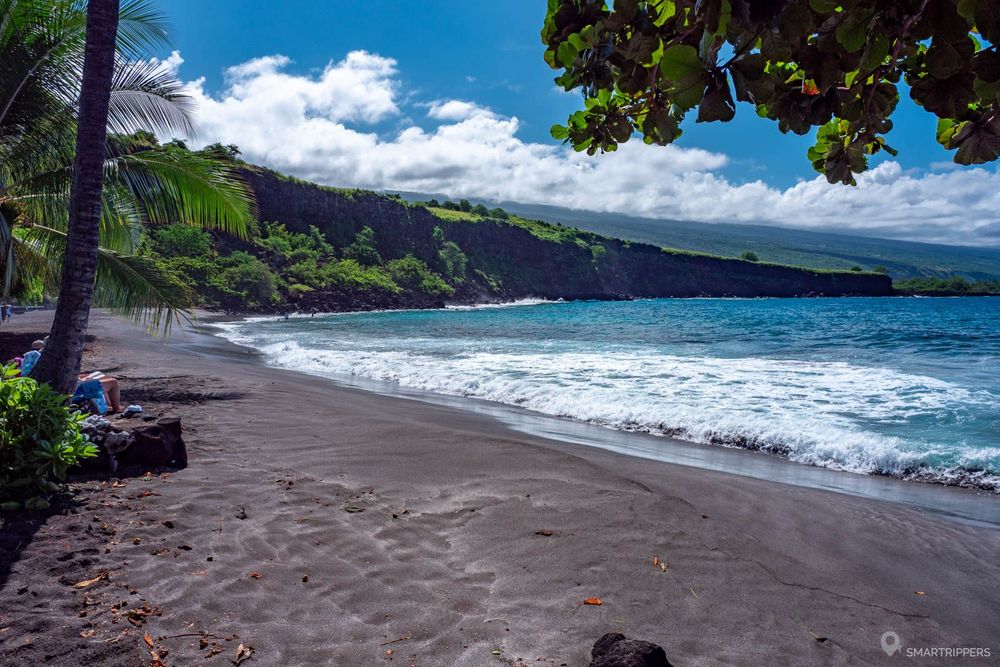
Ho'okena bay is also a place frequented by dolphins. They usually sleep and rest in the bay. If you wish to go to meet them, you can rent a kayak directly on the beach. Signs will explain you the rules not to disturb them as well as the best place to observe them.
Note that it is forbidden to swim with them but it is possible to wait for them aboard the kayak. To maximize your chances of observing them it is recommended to come between 9am and 2pm, during which time they rest or play.
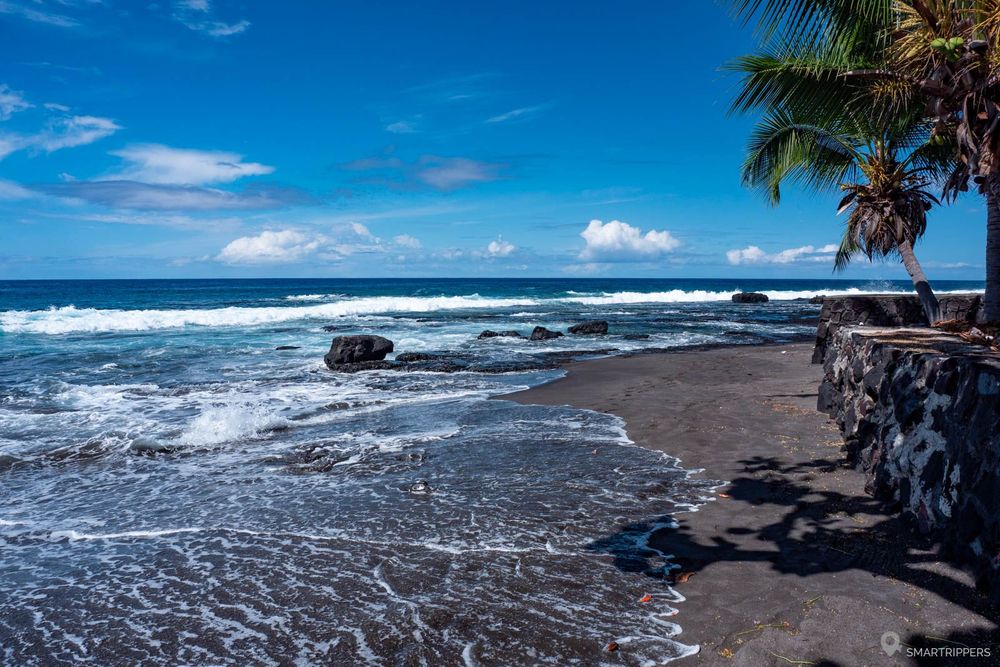
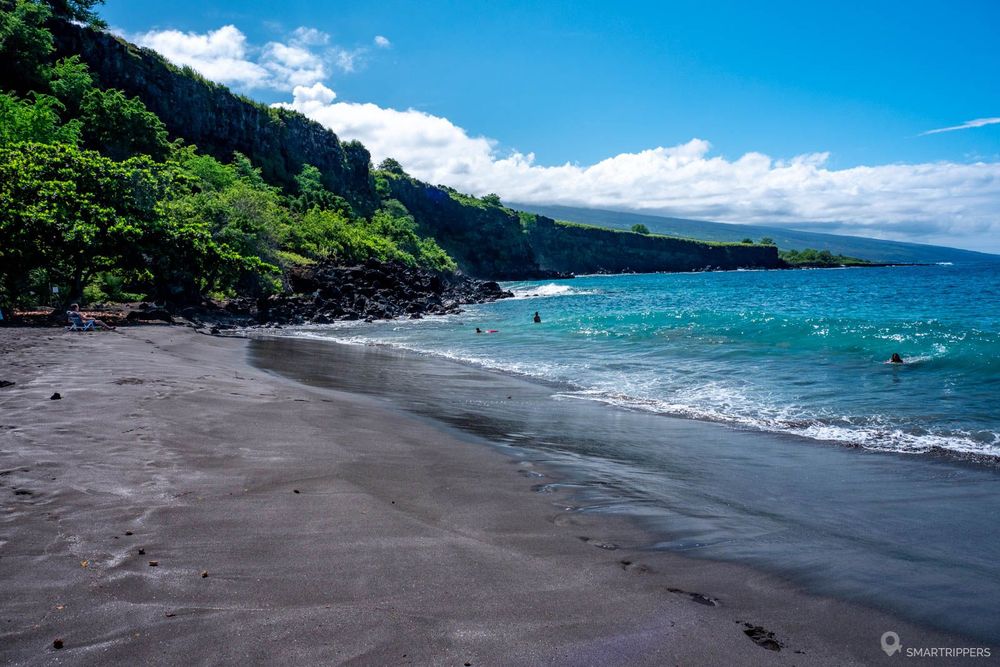
On the facilities side there are sanitary installations, showers and many picnic tables in the shade. It is also possible to camp on site.
How to get to Ho'okena Beach
Access to Ho'okena Beach is via the Hookena Beach Road, a small and badly maintained 3.7 km road that descends from Highway 11. Parking is available near the beach.
Puunalu'u Black Sand Beach
Don't miss a stop at this famous black sand beach in the south of Big Island. In addition to having a beautiful black and fine sand, the beach is also a refuge for turtles that come here very frequently to rest. They are protected by zones delimited by plots placed by lifeguards.
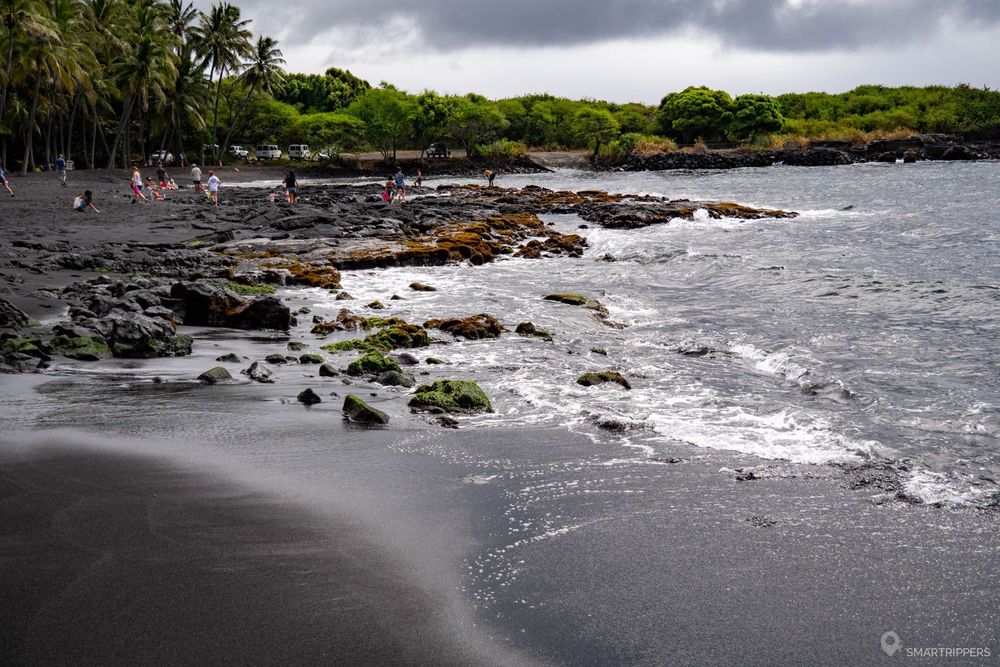
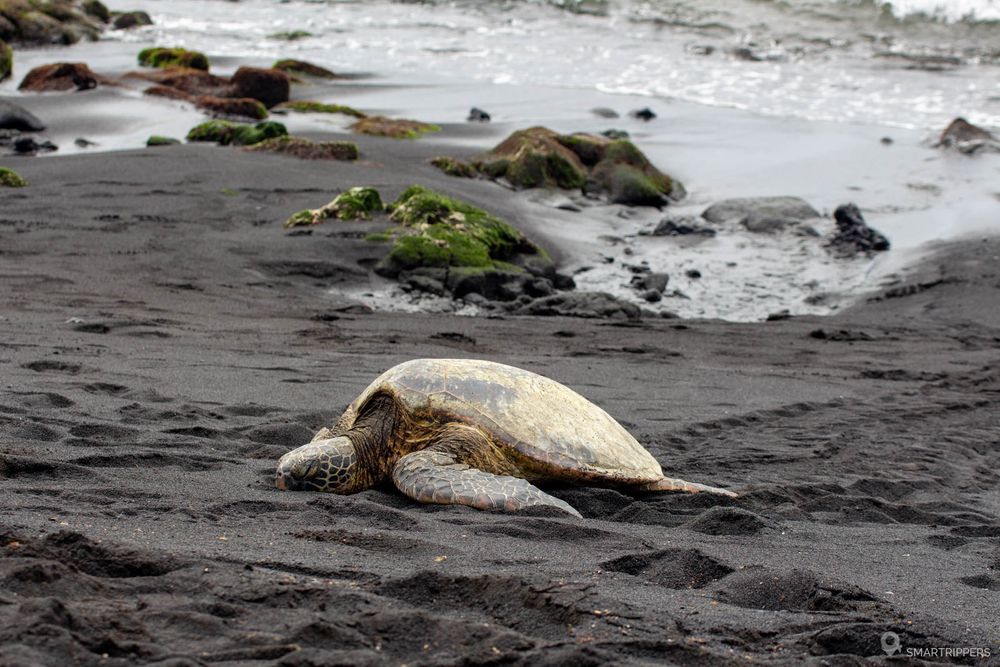
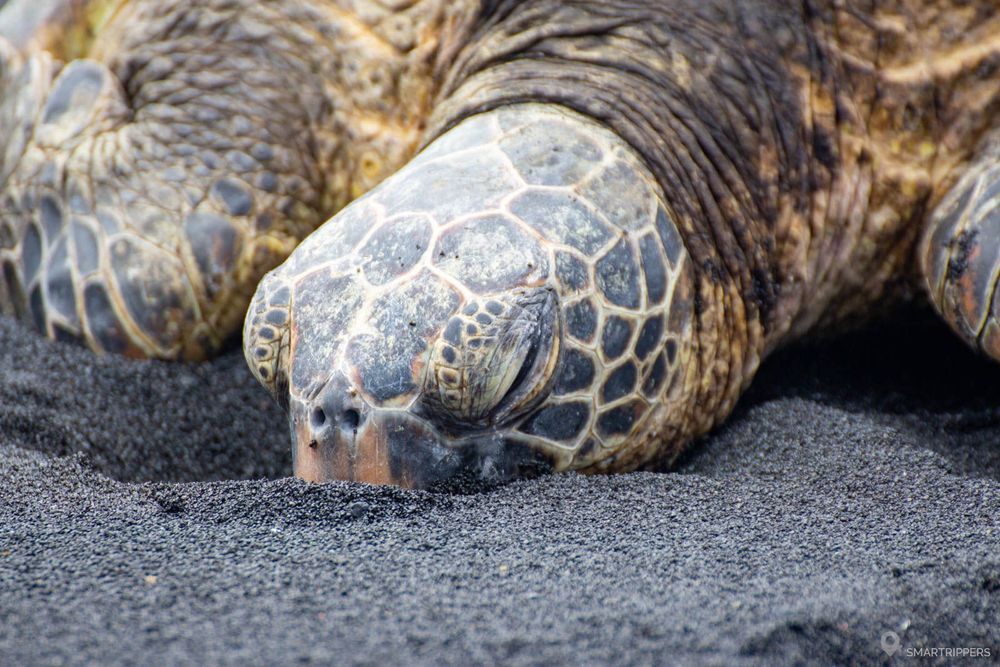
As a reminder it is necessary to respect a distance of 30 feet or 9 meters with each turtle.
Puunalu'u Beach is known to be one of the best places on Big Island to see turtles. Nevertheless, our personal experience leads us to believe that they are much more numerous at the Kaloko-Honokōhau National Historical Park near Kona.
The beach is supervised and it is possible to swim there. Be careful though, because the ocean is quite rough here and the currents are strong. On the right side of the beach you will find toilets and a shower. Several picnic tables are also available for lunch. Finally, hidden behind the beach, a small pond full of water lilies is worth a look while passing by.
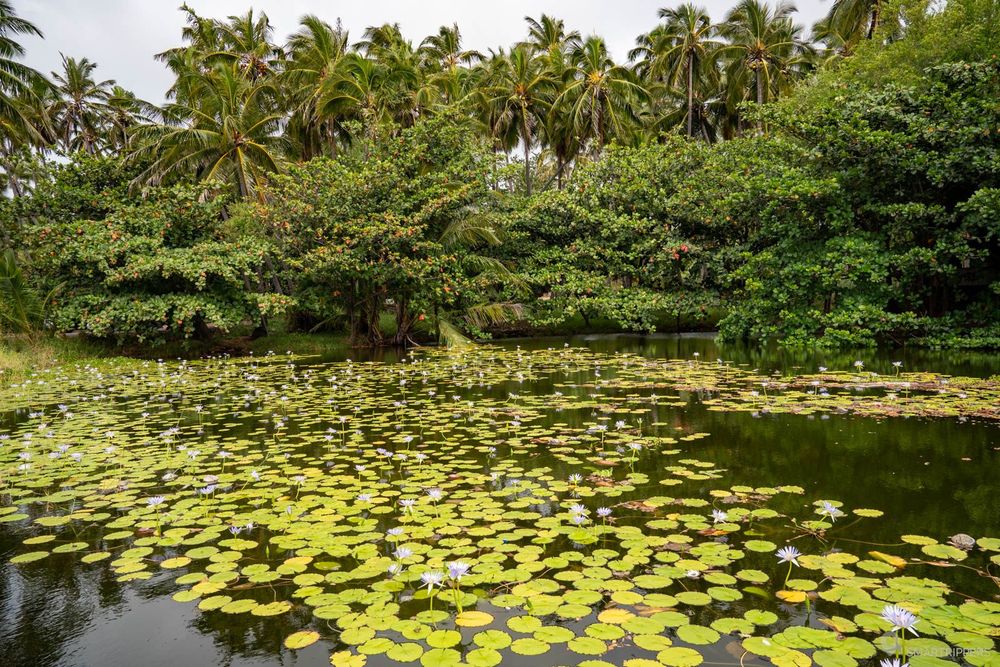
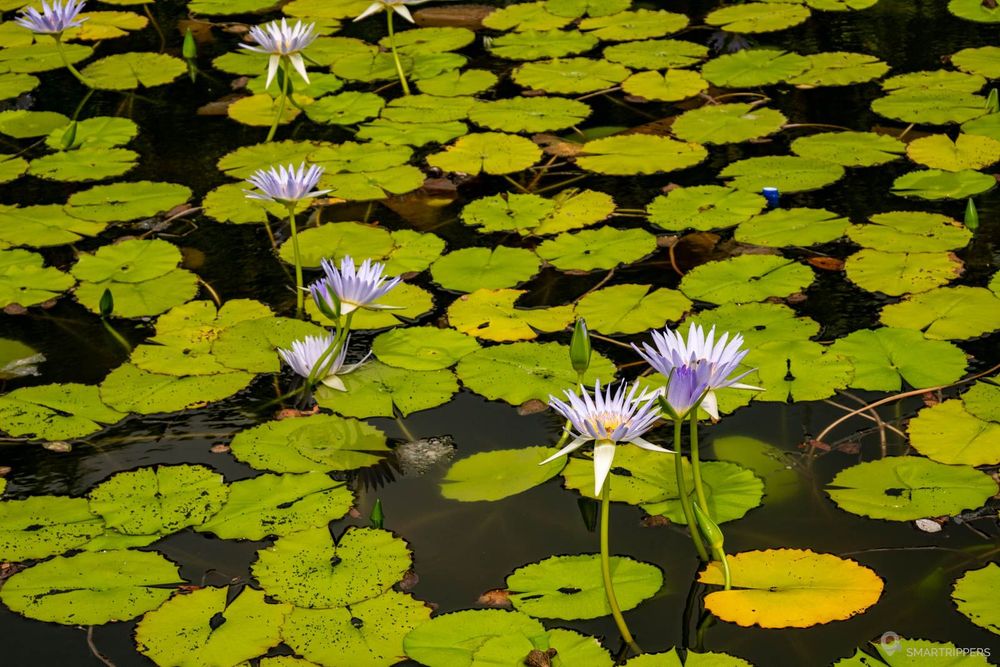
Finally expect to find people here, the beach being in the program of the many excursion buses that come to drop off their tourists.
How to get to Puunalu'u Black Sand Beach
The beach is accessible from the Ninole Loop Road, which can be used in both directions, whether you are coming from the East or the West. There are two accesses to the beach, one towards the center with a small parking lot and another at the south end, on the west side, with a large parking lot and a sanitary block.
2The green sandy beach of Papakōlea
This is probably the most famous beach of Big Island, famous for its strangely green sand.
Papakōlea Beach - Green Sand Beach
Round trip 8 km - 2h00 - Easy
Papakōlea Beach, more commonly known as Green Sand Beach, has the peculiarity of having sand of an astonishing greenish color due to the presence of olivine in the soil, a very rare fact in the world since only a small handful of beaches, 4 in number, are known to have such sand.
This strange sand comes from the erosion of the Pu 'u Mahana, a ring of tuff that is said to have formed more than 49,000 years ago near the ocean and which is gradually being eaten away by the elements. The most colorful sand is found in the steepest strata east of the beach.
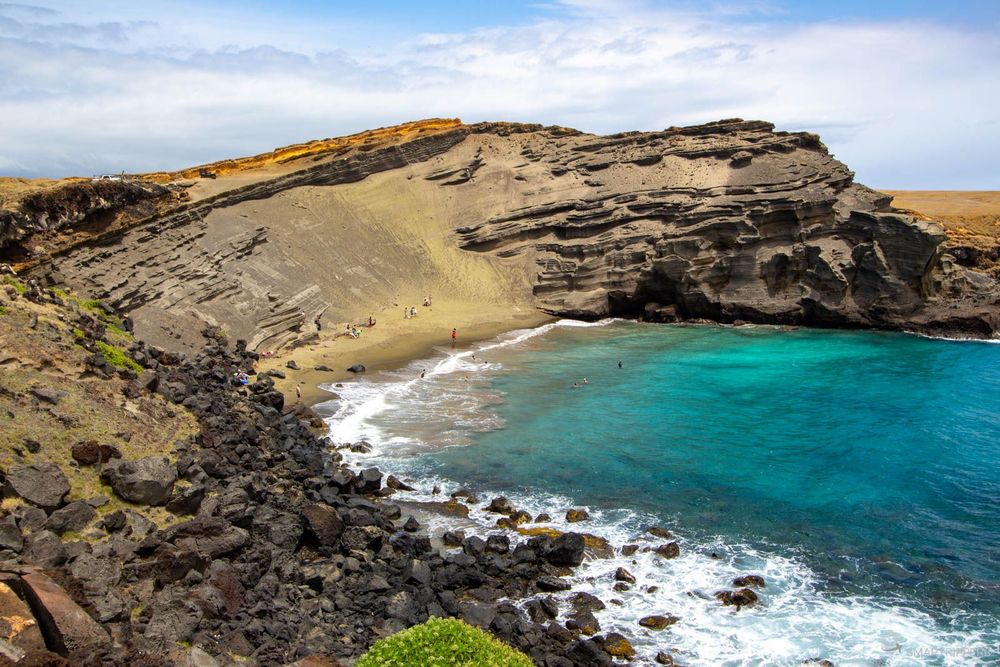
Green Sand Beach is therefore the tourist attraction of the south of the island and although quite difficult to access, the number of visitors continues to increase. The locals have understood it well because a parallel business not very legal has been set up here, charitable souls offering for astronomical sums to take you in 4x4 to the beach. But don't worry, you will still have the choice to go there for free on foot. All this is explained in the section on access to the beach.
To make the most of Green Sand Beach it is best to come on a day of good weather, the sun revealing the magnificent color of the water on the greenish sand. It is also preferable to come and swim here when the ocean is calm because the beach is not protected by a reef and the currents are strong here.
To reach the sand it will be necessary to walk down the steep slope left by what remains of the old tufa ring. The slope is quite steep but short (it can be slippery). Swimming is not supervised. There are no on-site amenities or shade.
Please note that it is forbidden to collect and bring back sand.
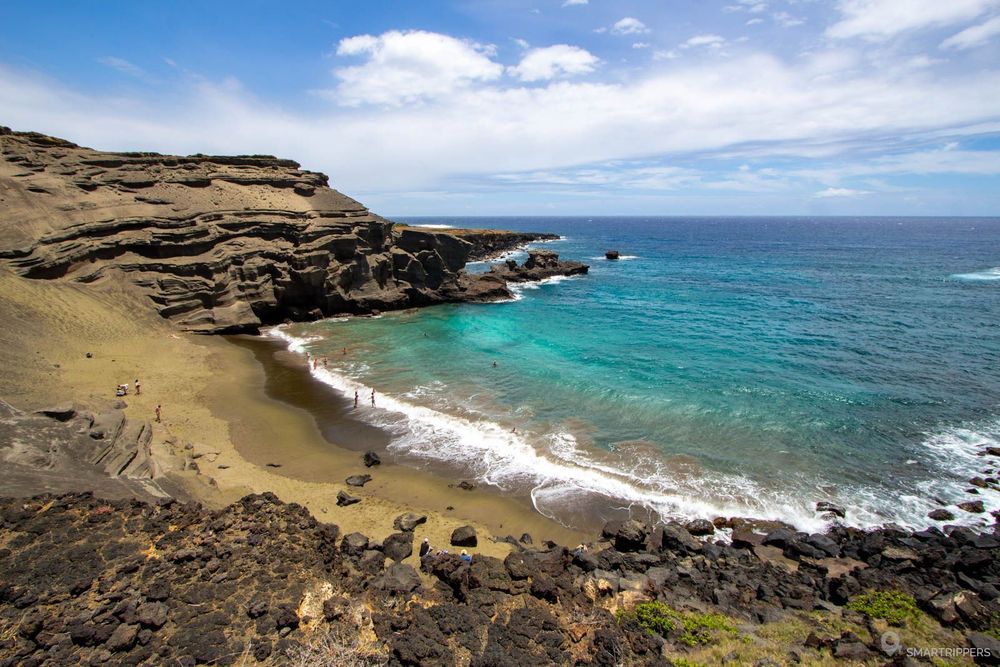
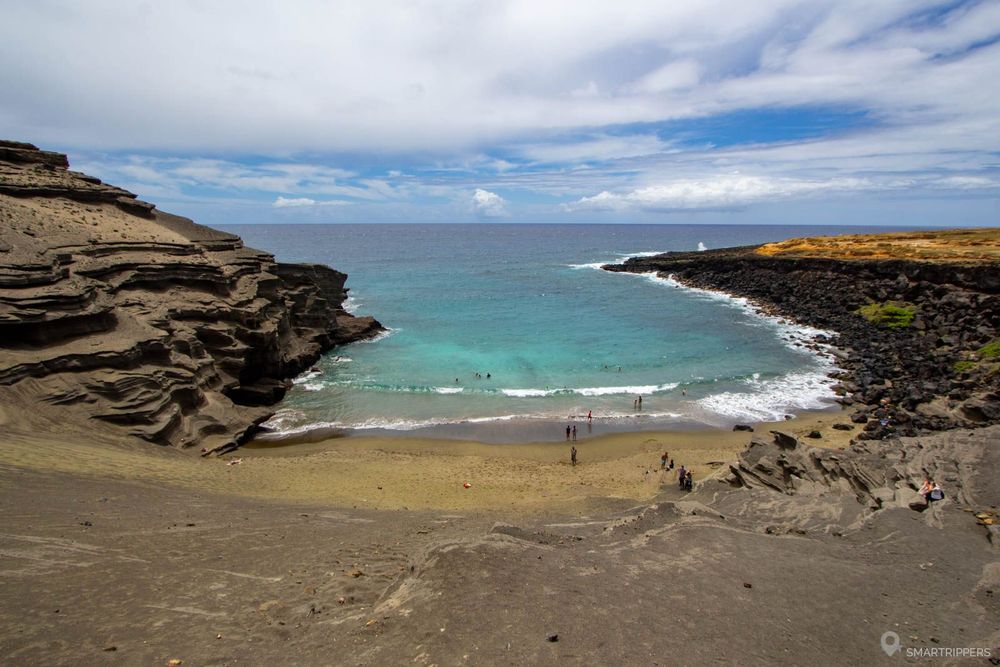
To make the most of the beautiful colors of Papakōlea Beach, don't go down to the sand right away. Walk a few meters westward along the edge of the small cliffs to discover the best panorama of Green Sand Beach.
I'll end with our personal feelings, because Papakōlea Beach disappointed us a little bit. We remained on our hunger because although the colors are beautiful in the sun, the sand is not so green because largely mixed. It is especially the setting with the small cliffs that makes it a charming place. Taking into account the difficulty of access, the frequentation, the illegal business of the place, it is not a place which will have marked us. Nevertheless, many travelers appreciate this beach, some of which place it in the TOP of their most beautiful beaches in Hawaii. We invite you to judge for yourself!
How to get to Green Sand Beach / Papakōlea Beach
To access Papakōlea Beach you will first have to take South Point Road, a small road that allows you to reach the south of the island from Highway 11. A little before reaching the end, the road splits in two. Continue straight ahead, with the road on the right leading to South Point. You will then come to a large dirt parking lot.
You will now have the choice to reach the beach either on foot or by being taken away in a 4x4 by one of the many locals who will come to offer you their services. Rates are generally $20 per person for the round trip in 4x4 which will take about 15 minutes per trip.
Access to Papakōlea Beach is forbidden with a rental 4x4 and we do not recommend that you try to go there anyway even if you are equipped with a Wrangler. The access roads are numerous and in very bad condition. In any case, you will not be insured in case of problems.
If you prefer to walk, you can reach the beach in about 45 minutes to an hour to cover the 4 km, taking care to follow the 4x4 tracks along the ocean as much as possible, otherwise you risk to lengthen the walk. There is practically no difference in altitude. Be careful, there are no trails or markings. Everything is done to demotivate you to go there by your own means and thus pay a carpool in 4x4.
However, walking is neither difficult nor paumatory. On the other hand, it can be very strenuous because there is no shade and is mainly done in a slightly sandy soil. Avoid the heat and the middle of the day! Be careful also to the wind or the rain, the place being particularly exposed to bad weather.
From the parking lot, follow the tracks to the waterfront and then cross the lava field along the ocean to the east. A long sandy and grassy area will follow, where the 4x4 tracks are scattered all over the place. Always follow the track closest to the ocean in order to follow it as far as possible and minimize the travel time. Rest assured, all tracks lead to the beach.
If you try to reach the beach on foot, take at least 1.5 L of water per person and, if possible, equip yourself with a GPS to make sure you reach the beach because there are many 4x4 tracks.
Another common practice we have tested is hitchhiking in 4x4 vehicles. If you are a well motivated hiker, you will probably (but not necessarily) be hiked by locals who will offer you free transportation in their 4x4s. Pretty cool, isn't it? So what's the catch? If you get on board like that, your driver will probably take the most difficult trails and especially the long ones (which make voluntary detours) to make you believe that the outward journey is extremely long! Once you arrive at your destination, your driver will offer you a deal: pick you up for $20 on the way back! You can of course decline the offer and walk back to the parking lot, so you can enjoy a quick and free ride!
You will also be able to walk there and pay for the services of a 4x4 for the return trip, but chances are they will also charge you the price of $20 for the return trip.
3Other beaches and access to the coast
Several accesses to the ocean allow you to go to the water's edge in the south of the island. Here are some of them.
Pebbles Beach
Here is apparently the most spectacular beach of the island to see the very powerful waves crashing there. Except that the day we went there, the sea was calm, offering just the view of a simple black pebble beach...
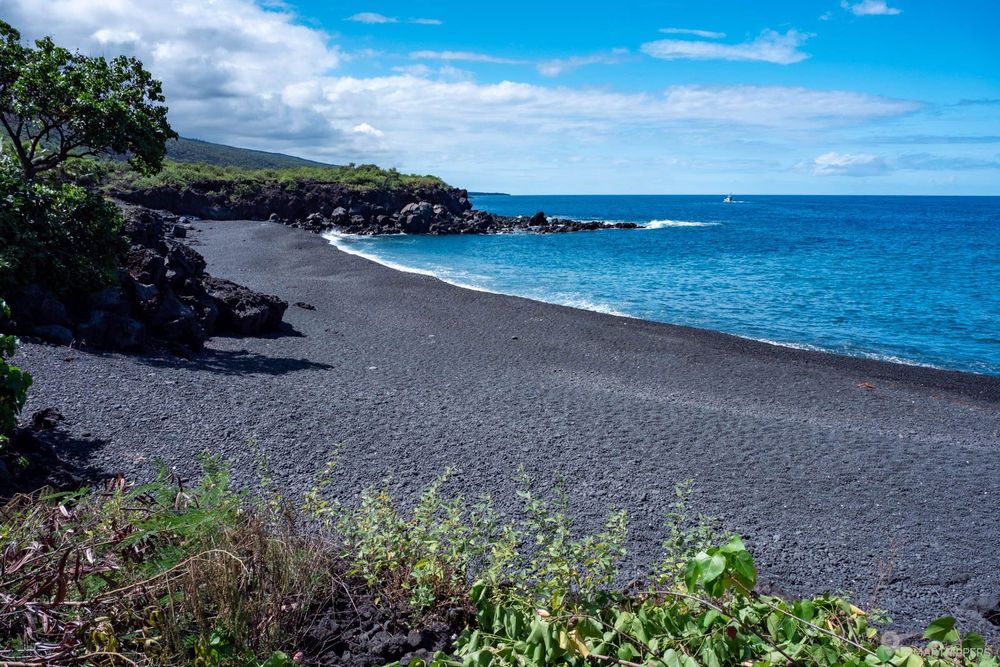
Peut-être doit-elle est très impressionnante les jours de vent? En tout cas, l'intérêt n'était pas au rendez-vous ce jour là.
How to get to Pebbles Beach
To reach Pebbles Beach, it will be necessary to go down the Kaohe Road which crosses Kona Paradise subdivision by snaking between small dead ends. The slope is very steep with 300m of difference in height on 1.8km only! At the bottom a tiny parking lot allows to park to access the coast.
South Point
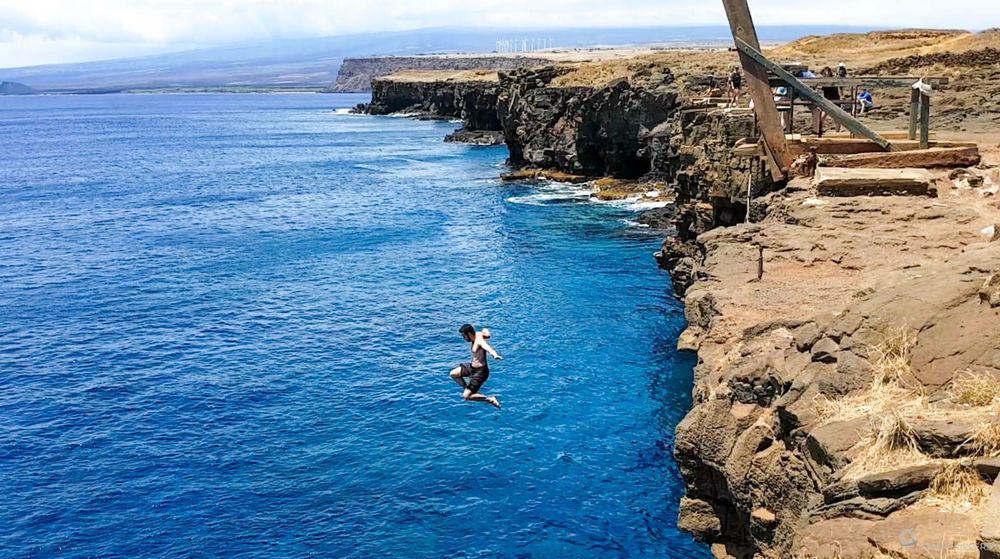
This is the southernmost geographical point of the Hawaiian archipelago and at the same time, the southernmost point of the USA. There are small cliffs of about 5 - 7 meters high from which a small wooden platform and a ladder make it possible to jump into the ocean. Apart from this, there is not much to do here than to tell yourself to have gone all the way south!
If you want to try to jump here, beware of currents and waves that can make the ascent difficult.
How to get to South Point
From Highway 11, take South Point Road, a small road that leads to the south of the island. Just before reaching the end, the road splits in two. Turn right and continue straight ahead to Papakōlea Beach. You will then quickly reach a dirt parking lot for parking.
Whittington Beach Park
This small Beach Park with its somewhat dilapidated facilities offers access to the ocean where it is possible to picnic by the water's edge or just watch the waves crashing on the rocks. It is also the opportunity to stop for a stopover during the long crossing of the south of the island.
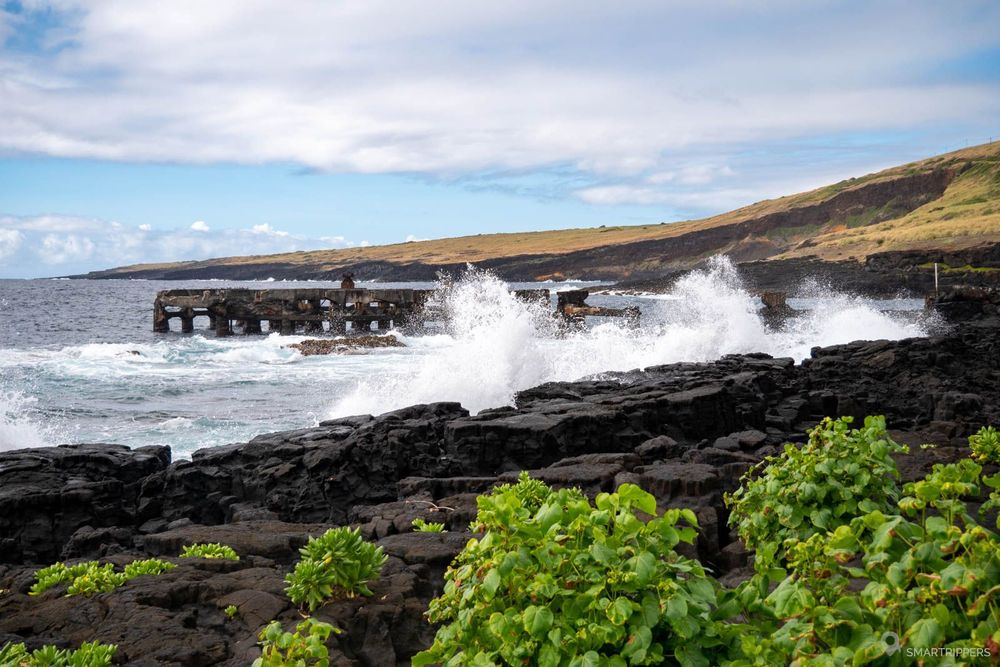
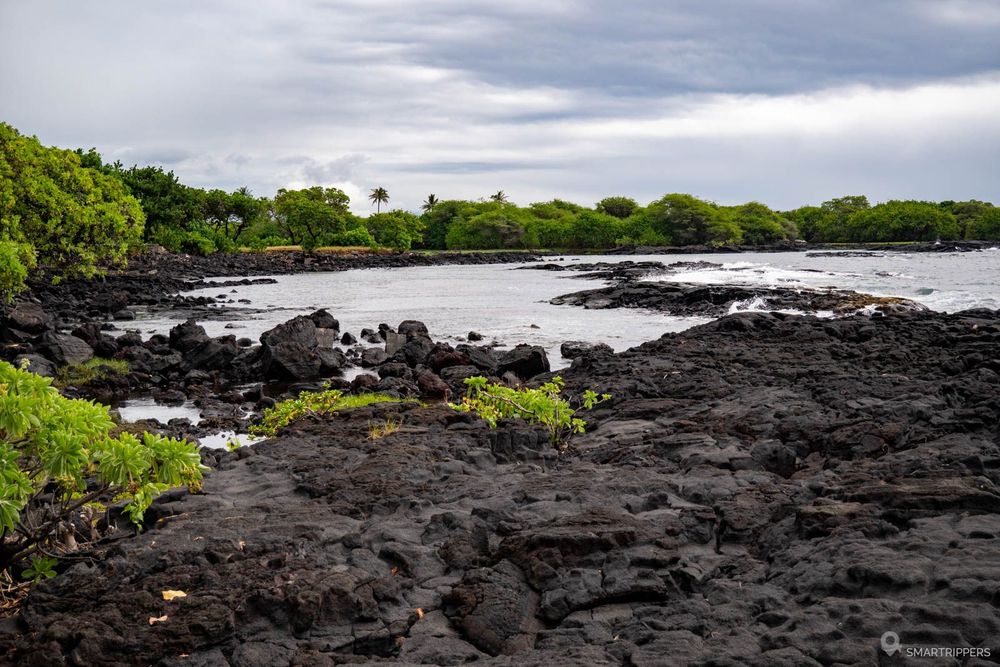
It is also possible to come and pitch your tent here even if the place doesn't seem very welcoming.
How to get to Whittington Beach Park
A small road of 500m provides access to the Beach Park directly from Highway 11. A large parking lot allows you to park your car.
Our walk south of Big Island ends here. While you are there, you can also drop by
Kahuku sector of Hawaii's Volcanoes National Park, an annex of the park that offers a few short walks in the south of the island.
We are Sandrine and Flo, French thirty-somethings. In 2019 we quit everything to live our dream, become nomads and travel around the world. We left with our baby, Lena, who was only 5 months old at the time. After a first trip around the Pacific Ocean by plane and a long 3 months stay in Hawaii, we left to discover Iceland for 3 months on board our 4WD pickup truck and truck camper. Then we continued our adventure in North America.
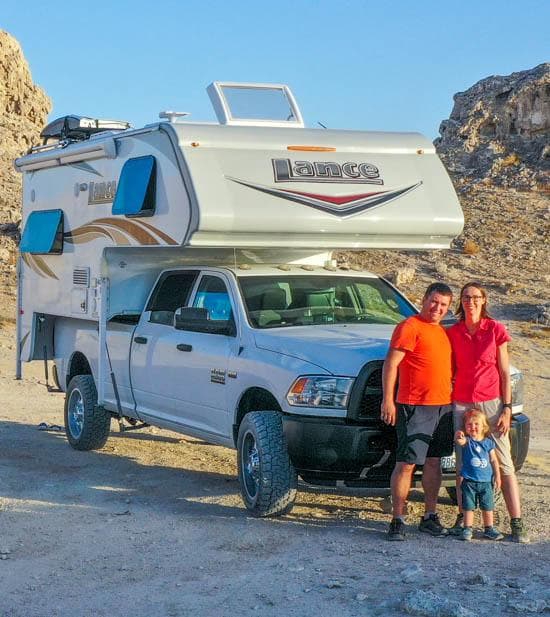
Today, if we can continue this adventure, it is above all thanks to our blog, Smartrippers! We created it one day in 2016, with the desire to share our good travel tips, without thinking that it would lead us there! We have developed it a lot over the years and have become experts on our 3 favorite destinations: Hawaii, Iceland and the American West. We now guide you to these destinations to help you plan the trip of your dreams!
Follow our adventures!